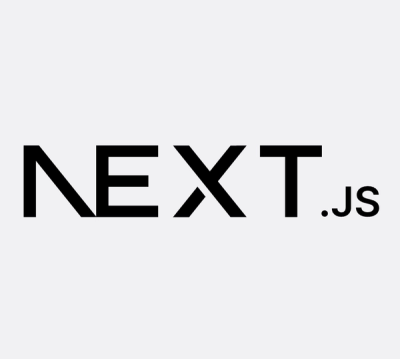lambda-tools




lambda-tools provides a set of utilities that are useful for development and
testing of Lambda based services. The functionality is divided into several
main categories so that features may be adopted and used as needed. Working code
examples can be found in the examples directory.
npm install --save @lifeomic/lambda-tools
DynamoDB
Many services use DynamoDB as their primary storage solution.
Testing service code against a DynamoDB storage layer requires either mocking
the DynamoDB interface (using something like aws-sdk-mock) or
pointing the test code at a provisioned DynamoDB instance. AWS has published
DynamoDB Local so that testing can be done without having to
use real AWS resources. DynamoDB Local has also been published as a
community docker image making testing even easier to do using
tools like docker-compose and dockerode.
lambda-tools supports both methods of integrating with DynamoDB. For simple
unit tests, the dynamodb helper can be used to provision and link DynamoDB
docker containers with ava test suites. The helper will define all
relevant environment variables and will inject a preconfigured
DyanomDB client into the test context. The setup and tear
down will also create and destroy tables, as defined in the schema, between
test cases. The helper will also automatically handle port binding differences
between regular and nested Docker environments.
lambda-tools managed containers are able to join an existing docker-compose
network allowing them to reuse an existing DynamoDB container by simply setting
the appropriate environment variables. If the dynamodb helper sees the
DYNAMODB_ENDPOINT environment variable, it will not provision a new DynamoDB
container and will instead point all clients at and perform all table
manipulations in the referenced DynamoDB instance. In this case AWS specific
environment variables, like AWS_ACCESS_KEY_ID and AWS_SECRET_ACCESS_KEY,
will also be used when constructing the test clients.
dynamodb.tableSchema(schema)
Declares the table schema that should be used by all test cases using the
useDynamoDB() helper. A schema a list of parameter objects accepted by
AWS.DynamoDB.createTable().
dynamodb.useDynamoDB(test, useUniqueTables)
Prepares an ava test suite for use with DynamoDB. The test context will
include the following clients on the dynamodb attribute:
| documentClient | AWS.DynamoDB.DocumentClient |
| dynamoClient | AWS.DynamoDB |
| streamsClient | AWS.DynamoDBStreams |
| tableNames | Map of base table name to uuid table name. E.g. users to users-abcdef12345 |
| uniqueIdentifier | The unique identifier appended to each table name. E.g. abcdef12345 |
| config | The aws dynamodb config object, useful for passing to dynamoose or other dynamo wrappers. |
If useUniqueTables is true, dynamically generated table names will be used, in
the form of <tableNameProvidedInSchema>-<uuid>. The unique table name can be
fetched from the tableNames map. Otherwise, the table name will be the default
provided in the schema. This allows tests to be run in parallel.
Kinesis
Many services use Kinesis as a message processing system.
Testing service code against a Kinesis service layer requires either mocking
the Kinesis interface (using something like aws-sdk-mock) or
pointing the test code at a provisioned Kinesis instance. LocalStack has published
LocalStack Docker so that testing can be done without having to
use real AWS resources, making testing even easier to do using
tools like docker-compose and dockerode.
kinesis-tools supports both methods of integrating with Kinesis. For simple
unit tests, the kinesis helper can be used to provision and link a Kinesis
docker container with ava test suites. The helper will define all
relevant environment variables and will inject a preconfigured
Kinesis client into the test context. The setup and tear
down will also create and destroy streams, as defined in a provided stream name array, between
test cases. The helper will also automatically handle port binding differences
between regular and nested Docker environments.
lambda-tools managed containers are able to join an existing docker-compose
network allowing them to reuse an existing Kinesis instance by simply setting
the appropriate environment variables. If the kinesis helper sees the
KINESIS_ENDPOINT environment variable, it will not provision a new Kinesis
service and will instead point all clients at and perform all stream
manipulations in the referenced Kinesis instance. In this case AWS specific
environment variables, like AWS_ACCESS_KEY_ID and AWS_SECRET_ACCESS_KEY,
will also be used when constructing the test clients.
kinesis.streams(streams)
Declares the list of stream names that should be used by all test cases using the
useKinesis() helper. Each stream will be created with one shard.
kinesis.useKinesis(test, streamName)
Prepares an ava test suite for use with a provided Kinesis instance. The test context will
include a AWS.Kinesis client on the kinesis attribute.
The streamName is used to create a new kinesis stream before all tests, and delete the stream at the end.
This method can be used to create multiple streams.
kinesis.useKinesisDocker(test, useUniqueStreams)
Prepares an ava test suite for use with Kinesis. The test context will
include the following clients on the kinesis attribute:
| kinesisClient | AWS.Kinesis |
| streamNames | Map of base stream name to uuid stream name. E.g. users to users-abcdef12345 |
| uniqueIdentifier | The unique identifier appended to each stream name. E.g. abcdef12345 |
| config | The aws kinesis config object, useful for passing to AWS.Kineis, or other kinesis wrappers. |
If useUniqueStreams is true, dynamically generated stream names will be used, in
the form of <streamNameProvided>-<uuid>. The unique stream name can be
fetched from the streamNames map. Otherwise, the stream name will be the default
provided in the streams array. This allows tests to be run in parallel.
Kinesis Tools
kinesis.tools contains some simple kinesis tools to iterate a stream.
KinesisIterator
The KinesisIterator class provides a simple method to get the records from a stream by creating the stream iterator,
and reusing it to get records.
Iterator config
| kinesisClient | AWS.Kinesis |
| streamName | the name of the kinesis stream |
new KinesisIterator(config)
async init()
The init function creates the stream iterator so it can get records from the stream.
async next(limit)
Fetches the next batch of records from the stream. It auto updates it's position in the stream, and returns the KinesisIterator
| limit | an optional limit to how many records to return. Max is 10,000 |
records
The records returned from the last KinesisIterator.next() call.
response
The complete response from the last KinesisIterator.next() call.
static async newIterator(config)
The static KinesisIterator.newIterator function creates a new KinesisIterator, and calls the init function.
async getStreamRecords(config)
A convenience method to get a single batch of records from a stream.
createLambdaEvent(records)
Convert an array of kinesis records into a lambda trigger event.
| SequenceNumber | number or string |
| PartitionKey | The partition key of the record |
| SequenceNumber | number |
| Data | The data buffer returned by kinesis.getRecords(...) |
kinesisLambdaTrigger({lambdaHandler, kinesisIterator, limit})
Will iterate through a kinesis stream, and pass the events to the lambdaHandler.
| lambdaHandler | A function to call the lambda function. It will be called with { Records } |
| kinesisIterator | KinesisIterator that is already provisioned to iterate through all of the records |
| limit | number. optional to limit how big each batch should be |
GraphQL
lambda-tools provides helpers for wrapping Koa instances in a client
that can easily make GraphQL requests. GraphQL reports application errors as
part of the response payload rather than through the use of HTTP status codes.
The graphql helpers provides specialized assertions that can be used to
check the status of a GraphQL response.
graphql.assertError(response, path, messageTest)
Asserts that an error was returned on the response. response is the response
object returned from the helper client. path is an object path used to select
the error to test (GraphQL can return multiple errors for a single query).
messageTest is either a string or a function used to test the error message.
When a string is used the error message must be equal to the string. When a
function is used the function must return true if the message meets
expectations.
graphql.assertSuccess(response)
Asserts that no errors are included on the response. response is the response
object returned from the helper client.
graphql.setupGraphQL(fn)
Prepares a Koa app instance for use by the useGraphQL() helper. fn is
invoked with the test instance and must return a Koa application.
graphql.useGraphQL(test, options)
Prepares an ava test suite for use with theh GraphQL helper client. The
test context will be augmented with a graphql(query, variables) method that
will use supertest to POST data to the options.url endpoint and
return the response. The default endpoint is /graphql.
MockServer Lambda
A collection of helper methods to mock and verify Lambda invocations based on MockServer
Lambda
Replicating the Lambda runtime environment in a local test framework is a
non-trivial thing to do. lambda-tools provides helper functions that can
either provision managed containers on a developer's behalf or reuse containers
that have been provisioned externally (using something like
docker-compose). It is also possible to use a managed Lambda
container with other existing infrastructure managed by docker-compose.
lambda.useComposeContainer(options)
Configures the lambda helper to use an existing container managed by
docker-compose in all test suites leveraging the useLambda() helper. This
helper depends on the COMPOSE_PROJECT_NAME environment variable being set in
the test process. The following options must be provided:
- handler -- the reference to the Lambda handler function in the form
<module>.<function name>
- service -- the name of the compose service providing the Lambda runtime
lambda.useNewContainer(options)
Configures the lambda helper to provision a new Docker container managed by
lambda-tools for use in test cases. The following options are supported:
- environment -- a map of environment variables to be defined in the
Lambda execution environment
- mountpoint -- required. The directory that should be used as the
Lambda task root. This should contain the Lambda code bundle.
- handler - required. The reference to the Lambda handler function in
the form
<module>.<function name>
- image - the docker image used to provide the Lambda runtime. By default
lambci/lambda:nodejs10.x is used.
- useComposeNetwork - a flag indicating if the container should be attached
to a docker-compose managed network. By default the container uses a
dedicated isolated network. If set to
true, the COMPOSE_PROJECT_NAME
environment variable must also be available in the test process.
lambda.useLambda(test, options)
Prepares an ava test suite for use with a Lambda runtime. options may
be used to provide or override any options from useComposeContainer() or
useNewContainer(). The test context will be augmented with a lambda
attribute. This attribute is an alpha client instance that will invoke
the configured Lambda function and has been augmented with two additional
methods. The graphql(path, query, variables, config) method will execute
a GraphQL query against the function where path is the URL path to POST to,
query and variables define the GraphQL request, and config provides any
additional alpha parameters (like request headers). The raw(event, context)
method allows a raw Lambda event to be passed to the function and will return
the raw response object.
Lambda Webpack Bundle CLI
Building code bundles that are optimized for the Lambda runtime can be a
tedious exercise. In order to share code and learning in this area across
several projects, lambda-tools provides a lambda-tools-build command that
will generate Lambda code bundles. The CLI is capable of building a single
bundle or multiple bundles and includes source maps, transpiling, minification,
and relevant polyfills. When building a single bundle the output may also be
zipped so that it is ready for upload to the Lambda environment. The CLI
documentation may be accessed using the lambda-tool-build --help command.
Build all lambda functions within a directory:
lambda-tools-build -z -s my-service -n 8.10 -o ./dist/lambdas ./src/lambdas
Your ./src/lambdas directory should look similar to:
./src/lambdas/func1/index.js./src/lambdas/func2/index.ts./src/lambdas/func3.js./src/lambdas/func4.ts
This will produce the following zip files:
./dist/lambdas/func1.js.zip./dist/lambdas/func2.js.zip./dist/lambdas/func3.js.zip./dist/lambdas/func4.js.zip
Build a single lambda function and provide a name for the file:
lambda-tools-build -z -s my-service -n 8.10 -o ./dist/lambdas ./src/lambdas/my-function/index.ts:my-function.js
This will produce the following zip files:
./dist/lambdas/my-function.js.zip
You will also find the following intermediate files:
./dist/lambdas/my-function.js./dist/lambdas/my-function.js.map
Build a TypeScript lambda function with a custom tsconfig
lambda-tools-build -t tsconfig-prod.json -o ./dist src/service.ts
Development mode:
WEBPACK_MODE=development lambda-tools-build -z -s my-service -n 8.10 -o ./dist/lambdas ./src/lambdas/my-function/index.ts:my-function.js
The WEBPACK_MODE=development environment variable will prevent
minification in the final output bundle.
Debugging
To enable debug level logging we are using the debug library to create the log lines.
Available flags are
lambda-tools:lambdalambda-tools:dockerlambda-tools:localstacklambda-tools:webpack
Concurrency
If you are experiencing Docker networking errors, it might be because of the high level of concurrency
in the kinesis, docker, or localstack setup processes. To specify how many connections to make at once
set the LAMBDA_TOOLS_CONCURRENCY environment variable to some integer value.




